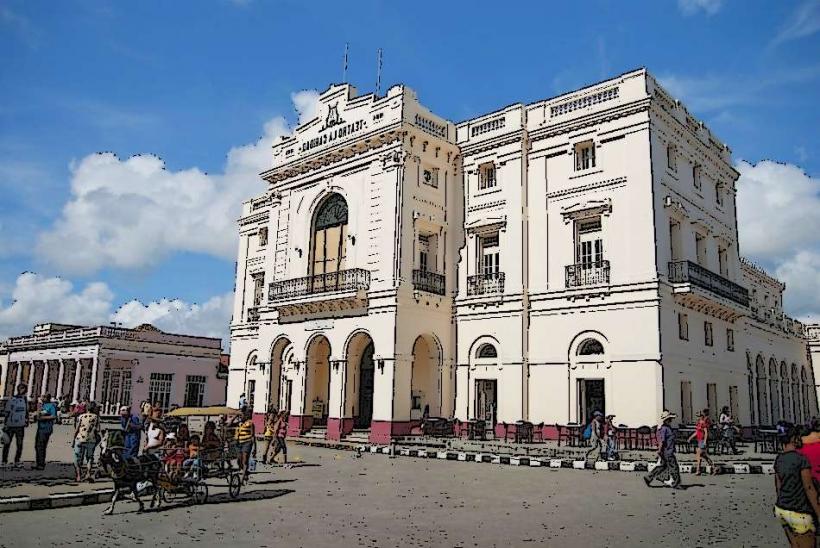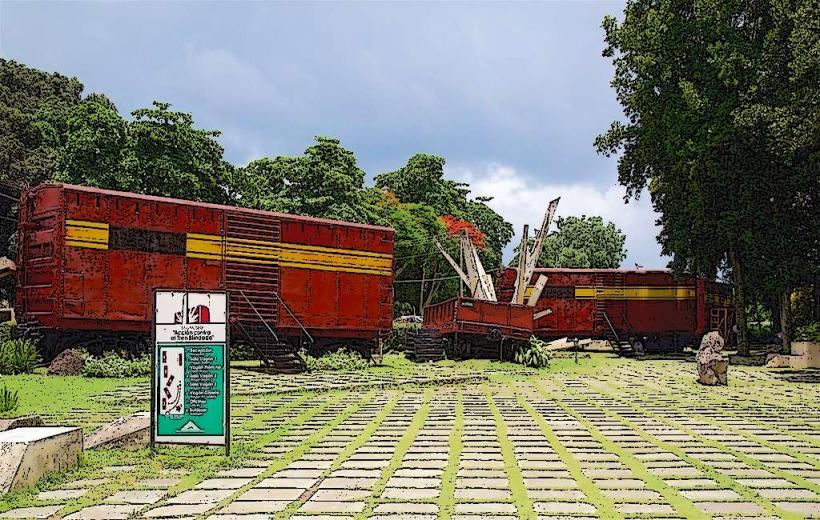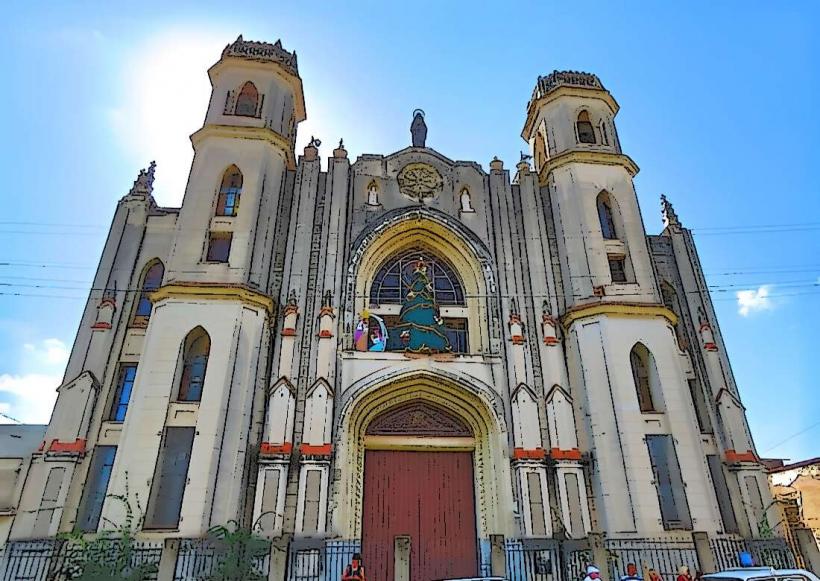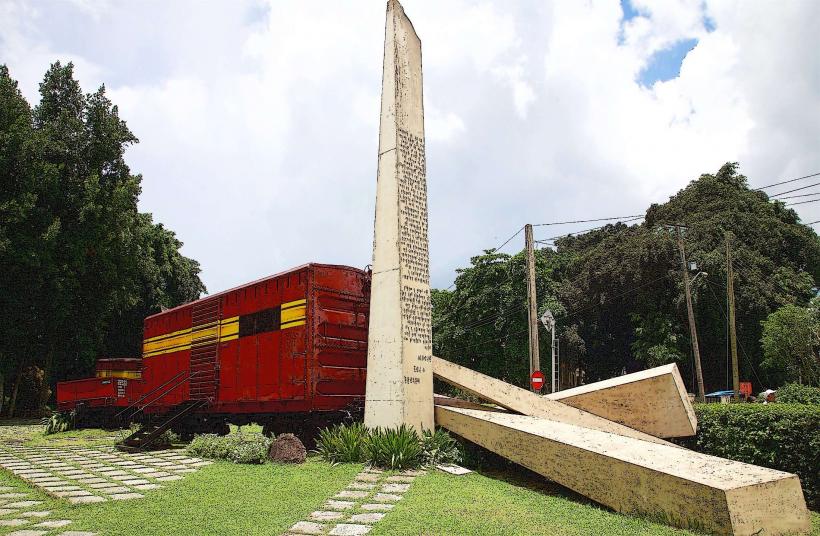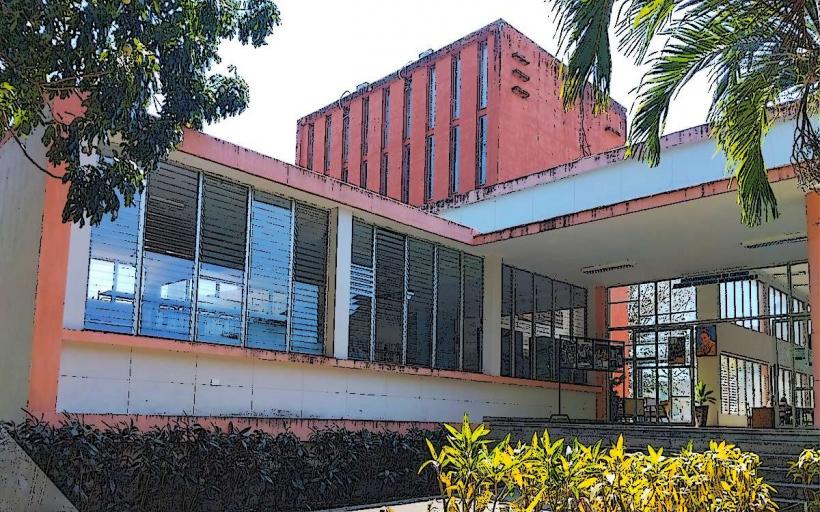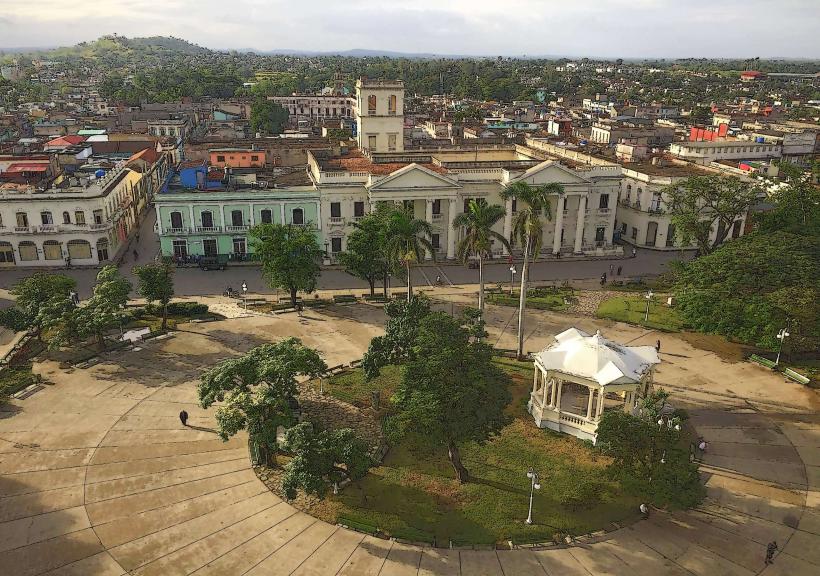Information
Landmark: Che Guevara MausoleumCity: Santa Clara
Country: Cuba
Continent: North America
The Che Guevara Mausoleum is a significant historical site located in Santa Clara, Cuba. It serves as both a tribute and a memorial to Ernesto "Che" Guevara, the Argentine revolutionary leader and key figure in the Cuban Revolution. Guevara's influence in Cuba and worldwide has cemented his legacy as a symbol of revolutionary ideals, and this mausoleum plays a crucial role in preserving his memory.
Location
- Santa Clara: The mausoleum is located in the central Cuban city of Santa Clara, which was the site of a decisive battle during the Cuban Revolution in December 1958. This battle, known as the Battle of Santa Clara, was a turning point in the revolution and led to the eventual overthrow of the Fulgencio Batista regime.
- Cuban Revolution Connection: Guevara played a central role in leading the victorious forces during the battle, which helped secure the city and paved the way for the triumph of the revolution. The mausoleum is located in Plaza Che Guevara, a central square in the city.
Historical Background
The Che Guevara Mausoleum is the final resting place of Ernesto Guevara and some of his companions who died during the Bolivian Revolution in 1967. After Guevara’s death, his remains were initially buried in an unmarked grave in Bolivia. In 1997, the remains were discovered and returned to Cuba, where they were interred in Santa Clara as part of a national tribute.
- Bolivian Campaign: Che Guevara went to Bolivia in 1966 in an attempt to ignite a revolution, but he was captured and executed by the Bolivian army in October 1967. His body was kept in a secret location until its discovery in 1997, and his remains were returned to Cuba in 1997.
- Return to Cuba: In 1997, a ceremony was held in Santa Clara to mark the return of Guevara’s remains to Cuba. The mausoleum was then created to honor his life, work, and legacy.
Mausoleum Features
The Che Guevara Mausoleum is a solemn and well-preserved site that includes several important elements:
Tomb of Che Guevara
- Final Resting Place: The mausoleum houses Che Guevara’s remains in a stone tomb, accompanied by the remains of several of his fellow combatants who also died in Bolivia. The tomb is a place of reflection and reverence, with a plaque detailing Guevara’s contributions to the Cuban Revolution and his role in global revolutionary movements.
- Symbolic Significance: The tomb is a powerful symbol of Guevara’s enduring influence on Cuban and world history, with inscriptions in his honor, including his famous quote, “Hasta la victoria siempre” (Always, until victory).
Che Guevara Monument
- Large Sculpture: The mausoleum is complemented by a large bronze statue of Che Guevara, which stands as a prominent feature in the square. The statue depicts Guevara in a standing position, looking out toward the horizon, symbolizing his vision for a better world and his commitment to the revolutionary cause.
- Symbolism: The statue serves as a constant reminder of Guevara’s revolutionary spirit, his dedication to the ideals of justice and equality, and his role in Cuba's fight for independence from imperialism.
Plaza Che Guevara
- Central Square: The mausoleum is situated in Plaza Che Guevara, a large open square where visitors can reflect on Guevara’s life and legacy. The plaza also serves as a gathering place for people to honor his memory and participate in commemorative events.
- Vibrant Location: The square is often the site of national celebrations and public gatherings, making it an important cultural landmark in Cuba.
Museum of Che Guevara
Adjacent to the mausoleum is the Museo Memorial Comandante Ernesto Che Guevara, a museum dedicated to Guevara’s life and revolutionary activities. The museum features a variety of exhibits related to his role in the Cuban Revolution, his time in Africa, and his Bolivian campaign.
Exhibits
- Personal Artifacts: The museum contains numerous personal items of Guevara, including photographs, letters, military uniforms, and his motorcycle (which he famously used during his early travels across Latin America).
- Revolutionary Legacy: Exhibits also highlight Guevara’s contributions to global revolutionary movements, including his writings, speeches, and political philosophy. Visitors can learn about his ideals, his commitment to social justice, and his views on Marxism and guerrilla warfare.
Interactive Displays
The museum uses various interactive displays and multimedia to engage visitors, providing a deeper understanding of Guevara’s character and the importance of his actions in Latin American history.
Significance and Legacy
The Che Guevara Mausoleum is a national landmark in Cuba and a place of historical and political importance. It not only commemorates Guevara's role in the Cuban Revolution but also honors his broader global influence as a symbol of anti-imperialist struggle and revolutionary fervor.
Political Symbolism
- Che Guevara as a Revolutionary Icon: Guevara’s image, particularly his iconic portrait, is still widely used across the world as a symbol of resistance against imperialism and the fight for social justice.
- Cuban National Pride: For many Cubans, the mausoleum is a place of national pride and reflection on the revolutionary ideals that shaped the Cuban Revolution. It stands as a testament to the country’s commitment to socialism, equality, and anti-colonialism.
Tourist Attraction
- Visitors to Cuba: The mausoleum attracts tourists from around the world, many of whom come to learn more about the life of Che Guevara, his influence on Cuban history, and his legacy as a revolutionary hero.
- Educational Value: For visitors, it is an opportunity to explore Cuba’s history and to gain insights into the broader context of Guevara’s life, including his travels through Latin America and his work with Fidel Castro in the Cuban revolution.
Conclusion
The Che Guevara Mausoleum in Santa Clara is one of Cuba’s most important historical sites, offering a space for reflection on the life and legacy of one of the 20th century’s most influential revolutionaries. With its striking monument, the solemn tomb, and the adjacent museum, the mausoleum serves as a reminder of Guevara’s commitment to revolutionary ideals and his lasting impact on Cuba and the world. For visitors, it provides an immersive experience that blends history, politics, and culture, offering a deeper understanding of Cuba’s revolutionary past.


